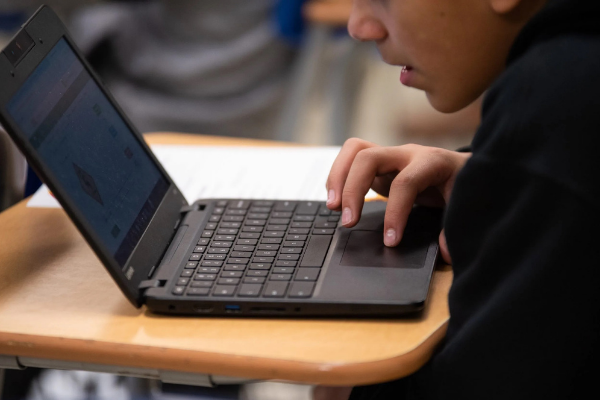Oklahoma students lost ground in nearly every grade and subject as they struggled to learn amid COVID-19 disruptions, newly released test score data shows.
Results from state assessments taken by students in the spring show significant declines when compared to 2019, the last time students took state assessments. The 2020 exams were canceled at the onset of the pandemic.
The scores, released by the Oklahoma Department of Education on Thursday, offer a glimpse of the academic toll the coronavirus pandemic has had on students. State Superintendent of Public Instruction Joy Hofmeister called the results “very concerning.”
Among the findings:
• In English language arts, 24.8% of students scored proficient or higher, down from 33.4% in 2019.
• In math, 22.1% of students scored proficient or higher, down from 31.9% in 2019.
• In science, 29.7% of students scored proficient or higher, down from 34.5% in 2019.
• Third grade showed the largest decline, with 14% fewer students proficient in both math and English compared to two years ago.
The tests measure students’ knowledge of grade-level academic standards, which in Oklahoma were realigned to be nationally competitive in 2017. A score of “proficient” means the student is on-track to be ready for college or career by the time they graduate.
Federal law requires schools to test students each year in English language arts and math in grades third through eighth and periodically in science, plus each subject once in high school. Oklahoma assesses science in fifth, eighth and 11th grades.
But fewer Oklahoma students tested in 2021 compared to previous years, and participation was inconsistent across districts, schools, and student groups — leading state officials to caution taking the data at face-value.
In a normal year about 99% of Oklahoma students take the exams and federal requirements say at least 95% must test. This year, that federal requirement was waived. Oklahoma’s average participation fell to 91% in science and 92% in math and English language arts. That was one of the highest rates of any U.S. state.
However, some districts posted much lower participation. Students were required to sit for the tests in person.
Participation below 95% could compromise a test’s representativeness of the student population, said Juan D’Brot, senior associate at the Center for Assessment, an agency that assists 44 states with administering standardized tests.
If the missing students are mostly low performers, for instance, it could give school or district leaders a false sense of students’ achievement unless they dig deeper into the data.
D’Brot said while it’s difficult this year to make comparisons to 2019 and between schools and districts, the difficulties students faced last year are widespread. “The point is we’re seeing the effects of kids and educators dealing with emotional, physical and psychological trauma as a function of the pandemic. That is an unequivocal absolute.”
Big shifts in enrollment have also been seen since 2019 that must be considered.
“It’s the combination of factors that is making it so complicated to understand the impact of enrollment fluctuations coupled with participation rate drops and loss of instructional opportunities and contextual factors,” D’Brot said.
The state Education Department will release an interactive data tool next week to help school and district leaders, parents and community members visualize and make sense of the data. Scores for disadvantaged student groups will also be released next week.
Unlike in previous years, accountability isn’t linked to student scores. The state Board of Education in December approved disentangling student assessments from school report cards due to the pandemic.
Even though nearly all schools re-opened last year, classroom time was lost to quarantines and isolation and short-term closures. Students had inconsistent access to teachers, instructional content and internet to support distance learning.
Hofmeister emphasized continuing to mitigate the spread of COVID-19 so that students can have fewer disruptions this year.
“Everyone wants to be back to normal. But we can’t let our foot up off the gas when it comes to being vigilant and careful to reduce the spread, even when we’re exhausted, so that our kids can be in-person. We know that is the most effective way to learn,” she said.
She also urged school leaders to dig into the data quickly and implement strategies to help students using federal relief dollars. Oklahoma has been allocated $2.3 billion for education since the start of the pandemic, and 90% went directly to districts through a formula that prioritizes districts serving students in poverty.
While the districts have flexibility to spend the funds, a certain portion must be spent to address learning loss.
Additionally, the state Education Department is using its portion of funding on several programs to help students improve academically, including a math tutoring initiative focused on middle school students and a teacher training program to improve reading instruction.
“We must be impatient for our students to have what they need. My charge to the districts is to examine the data and decipher meaning so that you can invest those relief dollars in a way that impacts children and families immediately,” Hofmeister said.
The 2021 spring assessment data for each district will be available next week at oklaschools.com.
Jennifer Palmer has been a reporter with Oklahoma Watch since 2016 and covers education. Contact her at (405) 761-0093 or jpalmer@oklahomawatch.org. Follow her on Twitter @jpalmerOKC.



